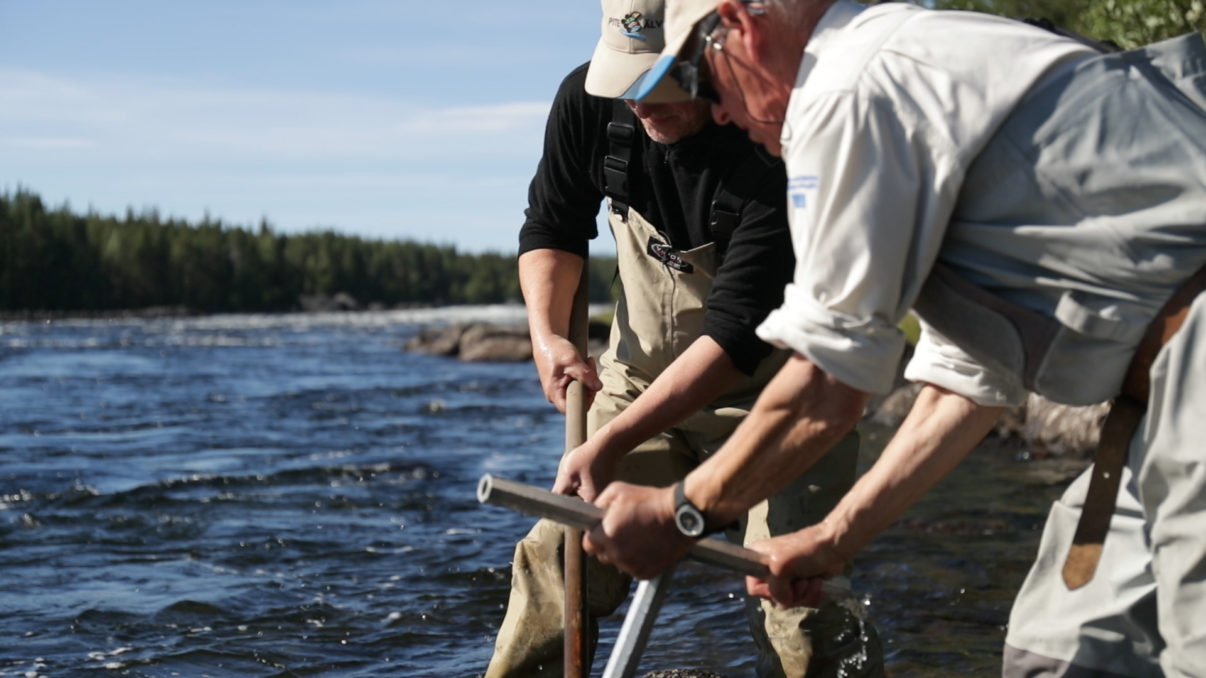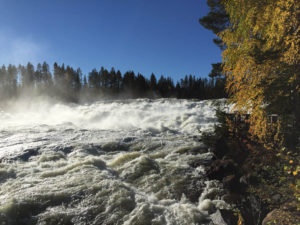Rewilding Sweden has been carrying out river restoration work in Swedish Lapland since 2016. Newly funded efforts will now focus on removing barriers from the River Abramsån, promising benefits for migratory fish, local communities and wild nature.

Free thinking
Free-flowing rivers with healthy fish populations offer a wide range of benefits to both wild nature and people. This explains why Rewilding Europe is working to restore rivers and fish migration in many of its rewilding areas.
Rewilding Sweden’s ongoing river restoration work in the Swedish Lapland rewilding area is now entering its next phase, promising benefits for local communities and wild nature. With efforts to boost fish migration on the Råne and Pite rivers ongoing since 2016, a new 33,500-euro (359,000 SEK) grant from the Swedish Agency for Marine and Water Management will be used to fund preparations for removing barriers along the River Abramsån (a tributary of the Råne). Rewilding Europe will contribute an additional 8,500 euros (90,000 SEK).
Next steps

Between 2016 and 2018 river restoration efforts in Swedish Lapland were funded by a generous grant from the Swedish Postcode Foundation. Such efforts included the restoration of nearly 60 spawning grounds along a 12-kilometre stretch of the Abramsån. Despite the successful creation of these gravel beds, however, the presence of artificial obstacles along the river continues to limit their benefical impact.
“This new funding will allow us to carry out evaluation work and seek legal permission to remove the obstacles,” explains Rewilding Sweden team leader Linnéa Falk. “These necessary steps will enable us to continue our efforts to restore the Abramsån, and its fish populations, back to health.”
The restoration of fish populations in the rivers of the Swedish Lapland rewilding area will, in turn, provide opportunities to develop local economies based on fishing and other nature-based activities. Catch and release fishing, particularly fly fishing, is both small scale and sustainable, and will help local river associations to conserve and further restore the rivers. It should also boost populations of the endangered freshwater pearl mussel, which is dependent on migratory fish for reproduction.
Rewilding Sweden’s river restoration efforts complement the EU-funded LIFE project ReBorn, which is working to restore the catchment areas of six rivers in the Swedish Lapland area.
Damming legacy
Criss-crossed by countless waterways, Swedish Lapland is defined as much by its rivers and lakes as it is by its sprawling forests. While many of these rivers have been dammed, others provide anglers with some of the best fishing in northern Europe.
Yet even on undammed waterways, a variety of factors have negatively impacted fish migration. Rivers such as the 210-kilometre-long Råne and 400-kilometre-long Pite today witness annual runs of salmon and sea trout that are far less than their natural carrying capacity.
One of the reasons for this is the presence of log dams and other obstacles along rivers such as the Abramsån, Råne and Pite. Many of these are a legacy of the local timber industry.
“In the past extensive efforts were made to artificially raise water levels by narrowing and channelising waterways, blocking side channels and removing boulders,” explains Falk. “This negatively impacted spawning grounds and the normal functioning of the rivers.”
